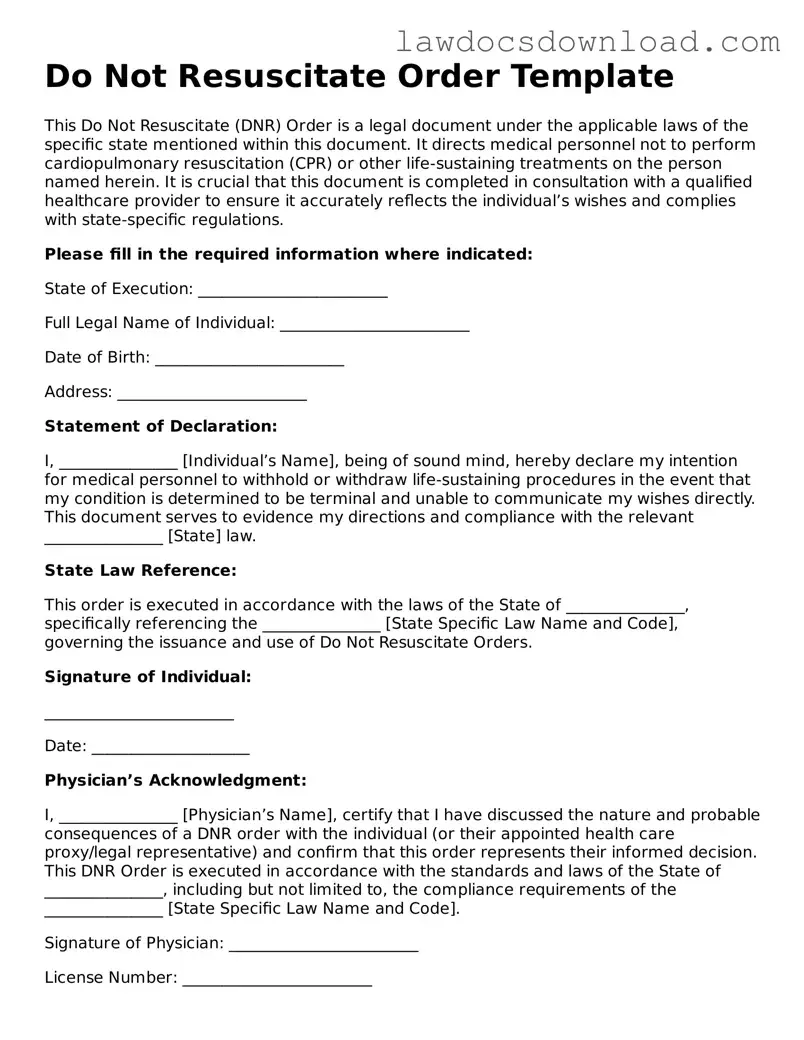Do Not Resuscitate Order Template
This Do Not Resuscitate (DNR) Order is a legal document under the applicable laws of the specific state mentioned within this document. It directs medical personnel not to perform cardiopulmonary resuscitation (CPR) or other life-sustaining treatments on the person named herein. It is crucial that this document is completed in consultation with a qualified healthcare provider to ensure it accurately reflects the individual’s wishes and complies with state-specific regulations.
Please fill in the required information where indicated:
State of Execution: ________________________
Full Legal Name of Individual: ________________________
Date of Birth: ________________________
Address: ________________________
Statement of Declaration:
I, _______________ [Individual’s Name], being of sound mind, hereby declare my intention for medical personnel to withhold or withdraw life-sustaining procedures in the event that my condition is determined to be terminal and unable to communicate my wishes directly. This document serves to evidence my directions and compliance with the relevant _______________ [State] law.
State Law Reference:
This order is executed in accordance with the laws of the State of _______________, specifically referencing the _______________ [State Specific Law Name and Code], governing the issuance and use of Do Not Resuscitate Orders.
Signature of Individual:
________________________
Date: ____________________
Physician’s Acknowledgment:
I, _______________ [Physician’s Name], certify that I have discussed the nature and probable consequences of a DNR order with the individual (or their appointed health care proxy/legal representative) and confirm that this order represents their informed decision. This DNR Order is executed in accordance with the standards and laws of the State of _______________, including but not limited to, the compliance requirements of the _______________ [State Specific Law Name and Code].
Signature of Physician: ________________________
License Number: ________________________
Date: ________________________
Additional Witnesses (if applicable):
- Witness Name: ________________________
Signature: ________________________
Date: ________________________
- Witness Name: ________________________
Signature: ________________________
Date: ________________________
Instructions for Filing:
This Do Not Resuscitate Order must be presented and filed with your primary healthcare provider and included within your medical records. It is recommended to notify close family members or legal representatives of the existence of this order to ensure your wishes are clearly communicated and understood.
